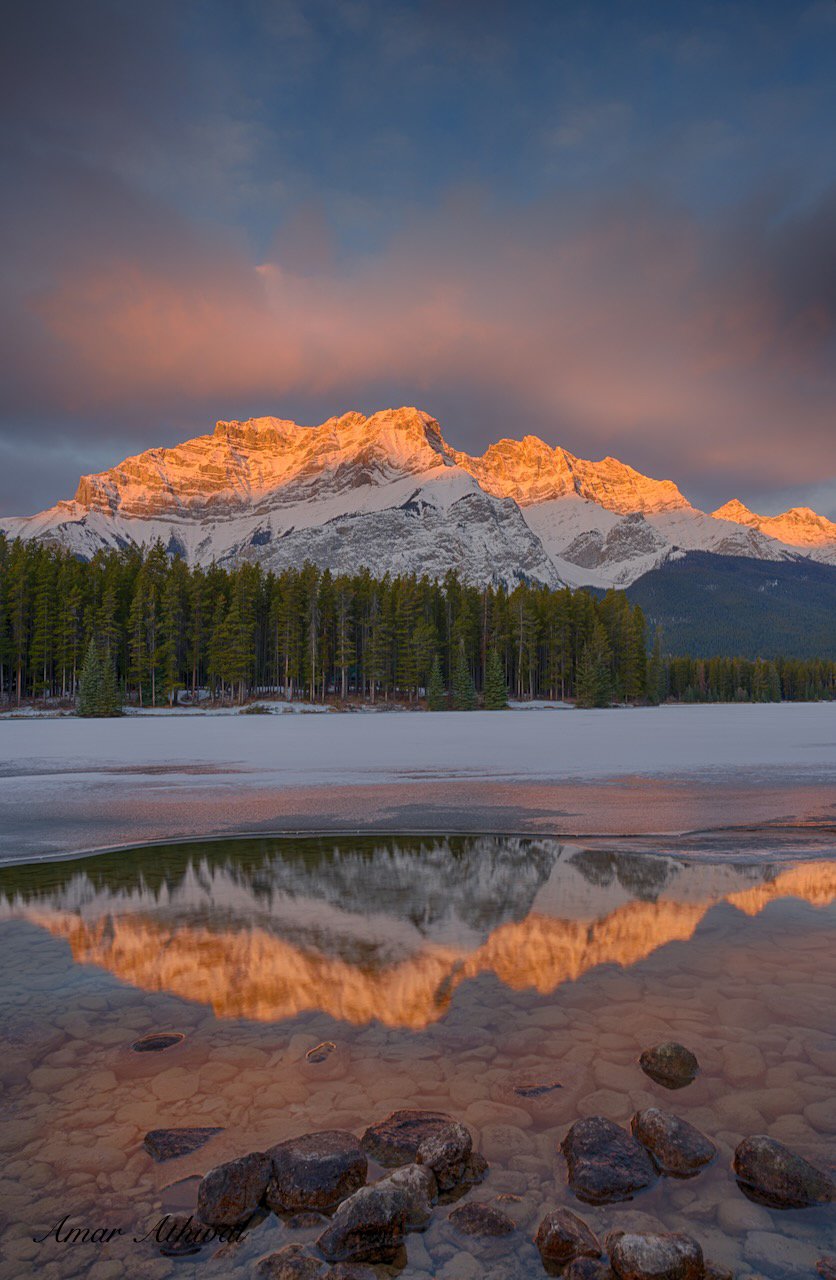M136 ("Split-lip") is the other large grizzly bear that calls the Bow Valley its home. As for the media and public attention, it's M122 ("The Boss") who gets most of it, if not all. But unlike perhaps us humans, neither bear cares who's on the news, nor do they care what we call them.
A few years back, I was at a viewing area, watching over a large open space when a family visiting from another province stopped to have a look. I said hello, and they asked if there was any wildlife in the area. I mentioned there were a few birds around, but as far as mammals were concerned, there were just the two-week-old grizzly bear tracks below us.
They started asking questions about bears, and the next thing you know, I was giving a point talk on the two large grizzlies, M122 and M136. After listening to me for a few minutes, during which I only used their numbers to identify them, the lady said, "That's very cold, giving them numbers instead of names." I replied, "There have been no complaints from any of the bears." Then I went on to explain that naming can lead to anthropomorphizing, which can result in data and conclusions that are not objective or valid.
Even then, researchers can develop attachments to a specific bear and feel saddened when its death is not natural. For some, naming a wild animal can place a sense of value on it, which implies that humans have power over them.
Some of the reasons a bear gets tagged are for research purposes or because the bear is being monitored for public and/or its safety. Once it's decided that a bear is going to be tagged, a team will work together, with each member having specific responsibilities. Once the bear is tranquilized, the team ensures that not only is the bear collared and ear-tagged, but that necessary samples are collected and the bear's health is checked.
With modern technology, the collar can send a radio signal or GPS coordinates. Male bears receive their ear tag with their assigned number on the left ear, while females get theirs on the right ear. Humans do make mistakes, though. A few years ago, a male black bear was spotted in the spring with cubs from that year. The Parks Canada team realized that it had been tagged on the wrong ear. Depending on how long the collar's battery lasts, it may function for a couple of years. For example, if the collar sends out a GPS signal every minute, it will last much shorter than one that sends out a signal every hour.
M136 was last collared and ear-tagged several years ago. His collar didn't last long; it's assumed he got into a fight with another grizzly, and off came the collar. However, he still has a small ear tag in his left ear, which can't be seen in this picture. It's often assumed that only part of his tag is attached to his ear, but he was tagged with a smaller ear tag. The yellow ear tag can be easily viewed, but you'd have to zoom in or get dangerously too close to see the number on the tag. There are other ways to identify him, such as his lighter-colored face, his narrower head compared to M122, the cut on his upper lip on the left side that gave him his street name of "Split-lip," and other features.
In the end, it does not matter what the public calls him or any other bear. The far more important thing is to give this bear, and all other bears, the space they need to make a living.



















